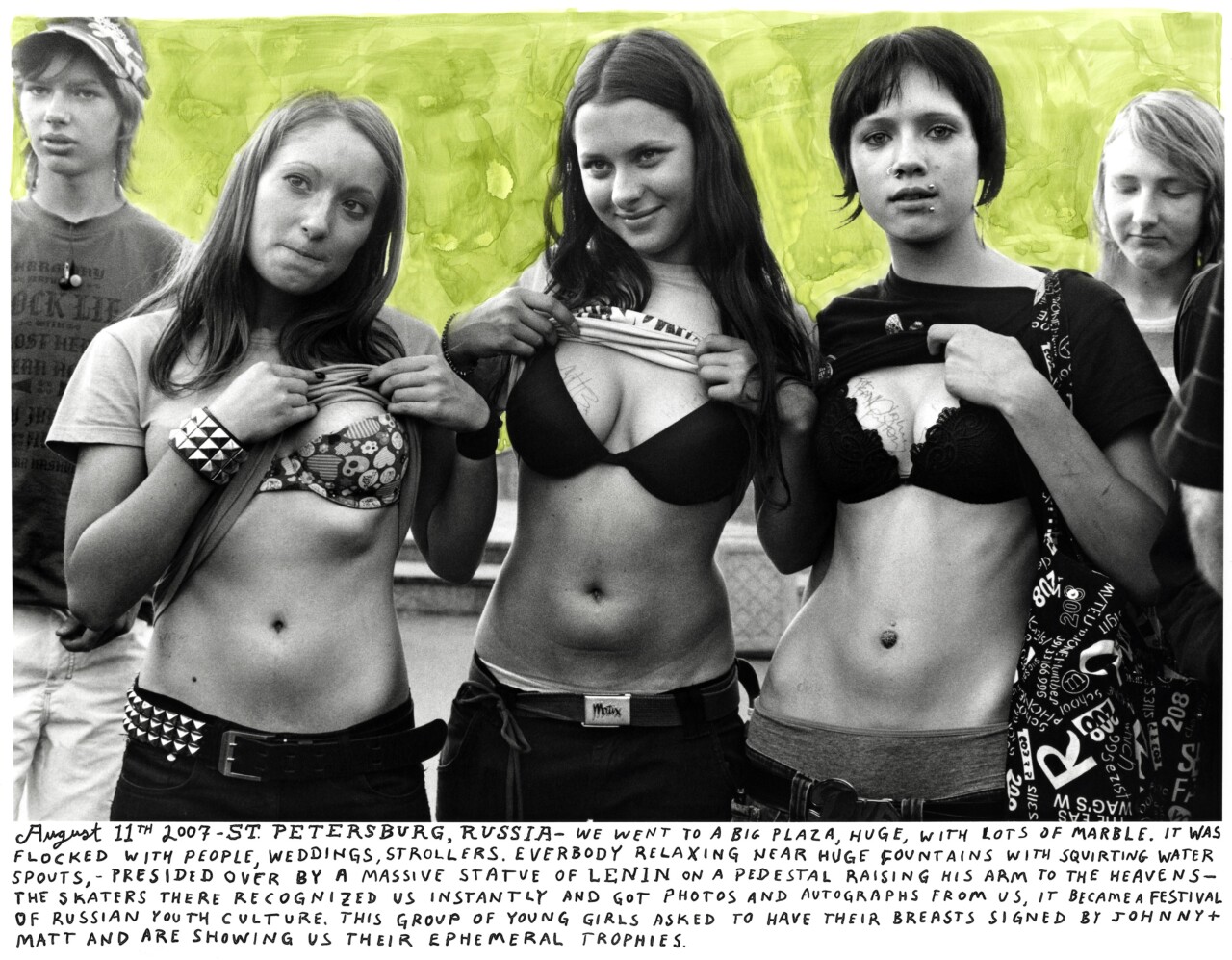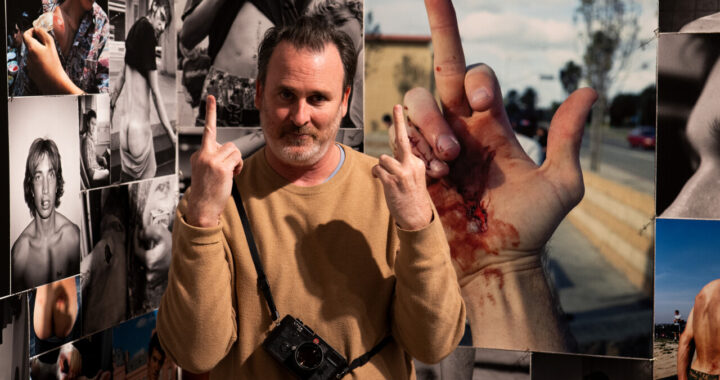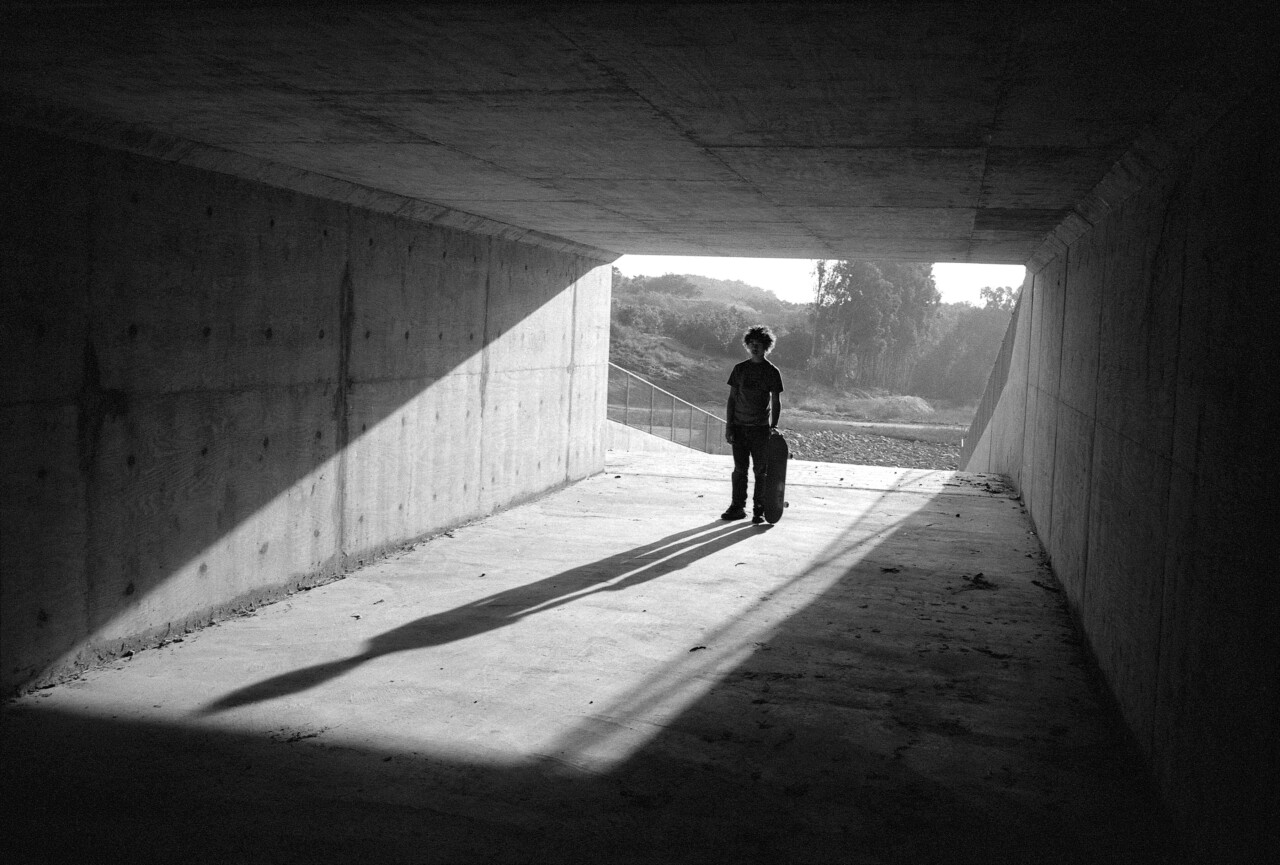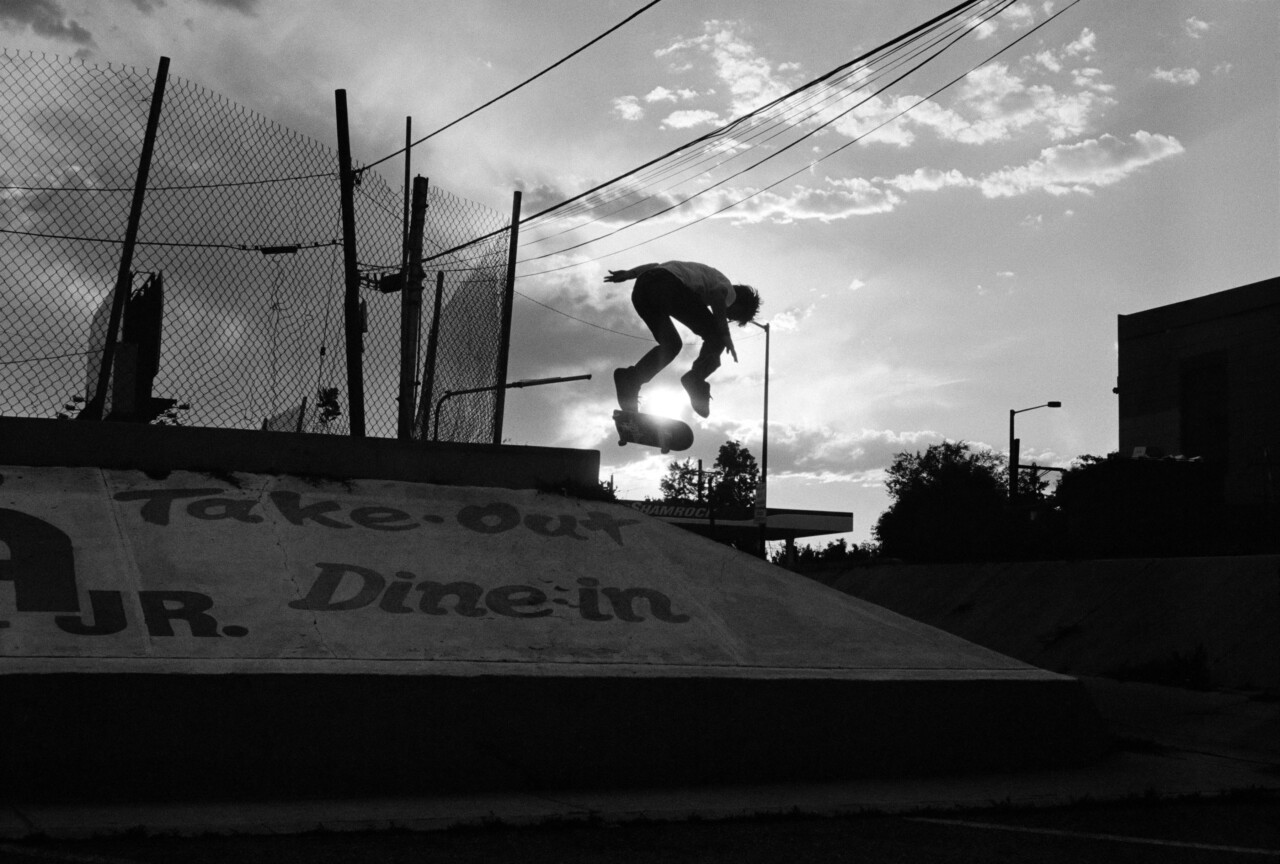“I enjoy observing people and capturing small moments, infusing them with sensibility”. He publishes his work in art booklets designed by himself, but his paintings and photographs are increasingly being shown in international galleries and museums.
Amsterdam
We meet him and his wife during the preparations for the exhibition Wires Crossed at the Bonnefanten museum in Maastricht, Netherlands. His wife is Deanna Templeton, who is also a visual artist and photographer. In 2010 she had her own exhibition in the same country, at museum Schunck in Heerlen. The couple has been staying in the Netherlands for several weeks now. But not as typical American tourists gazing around with amazement. Ed Templeton: “We have been mostly house hunting for the past two weeks. We are actually looking for a house in Amsterdam. The plan is to come and live in Amsterdam during the summer months. We are already in talks with a real estate agent”
Templeton turns out to be an easy talker. He quickly makes an open and engaging impression. The Netherlands offers an ideal base for visiting European exhibitions that may or may not show work by the artists couple. There is plenty of interest. And of course it is a lot easier to travel from the Dutch capital than the long flight from Huntington Beach, their current residence in California.
Huntington Beach
Templeton (1972) develops his images at his home, simply old school in a dark room. He also owns an enormous collection of photobooks. “Quite a few first prints, rare books. Including ones from Dutch photographers Ed van der Elsken and Robin de Puy. I have so many now that I almost have no space left“. Huntington Beach is located in Orange County, on the shores of the Pacific Ocean. Residents often see Templeton walking around, taking photos. But he notices other things. “When I walk around our neighborhood, I see more and more flags, all of them Republican. That’s quite weird. There are still a few Democrats living on our street. How many?” Deanna holds up three fingers.
The Bonnefanten has hundreds of works that he captured when he was still active as a professional skateboarder. Not without merit. He was once a two-time freestyle world champion. Even after he stopped competing, he continued to visit the skateboarding scene regularly. Skateboarders now see him as a hero, a cult figure. They know him, trust him, and that trust is reflected in his photography.
We see intimate moments, action shots, snapshots and polaroids. Intriguing, playful, and vibrant. They splash off the white walls. “The main reason I started photography was to document skateboard culture. In 1994, I came across several photo books by people like Larry Clark and Nan Goldin. That was a real eye-opener for me. When I saw these books, I realized that you could also photograph your own life and your own friends. From then on, I became a real photography enthusiast.“
Fuck you old man
Templeton strikingly often photographs boys and girls, kissing, posing defiantly, proud of their injuries after yet another skateboard fall. “I am very interested in the transition from youth to adulthood, the awkward period that young people go through. Everyone goes through it at some point. Now that I’m older, it’s unfortunately more challenging to continue photographing youth culture. When I see an interesting person on the street, it feels awkward to say, ‘Hey, can I take a photo of you?’ Before you know it, you might get a ‘fuck you old man,’ haha.”
What American artists tend to do is to appreciate their own culture and shape it into a kind of documentary roadmovie. See also Robert Frank, whose book The Americans has had a significant influence on photography. Templeton confirms: “Robert Frank is indeed a major influence, as well as Jim Goldberg.” Like Templeton, Goldnerg too has a predilection for the raw romanticism of the street. “I don’t quite know how to explain it, but I always felt a bit removed from people in general. That’s why I always felt more like a documentarian. Since skateboarding took me to various countries, I was able to apply my street photography there too.”
Emotion
Ed Templeton never had any education in photography. “Sometimes I wish I had gone through formal training. I miss it sometimes, especially when I talk to other artists about technique and such.” The fact that he had to discover and learn it all himself does not bother him in the least. On the contrary. “I think you don’t need a school or training to do something. You just have to try it yourself. I have learned a lot from doing it myself, from the mistakes I made. I got that from the skateboard culture, which has a strong do-it-yourself side.“
As a result, his images may seem instinctive, made from intuition, but he claims that’s only partly true. “That’s true, I work from intuition, but I consider technique equally important. I’m not a perfectionist, but I prefer to show two sides: composition and emotion. If you fail at that, there will always be something left over. Then I add a text or drawing so that the photo takes on a life of its own.”
“The best is when emotion and technique come together. Like with my favorite photographer Brassaï. He was technically perfect. His photos are razor-sharp, well-composed and well-timed. I think I also photograph that way. At least, that’s the goal. I always strive for the perfect photo. To achieve that, a photo needs to be well-lit, with good sharpness and focus. The most important thing is to capture the emotion. If the emotion is part of the picture, even if it’s blurry, it doesn’t matter. As long as the emotion is there to make you laugh or make you think.”
Ed Templeton – Wires Crossed (Bonnefanten, Maastricht until 17 september 2023)

Fans show their autographed chests, St Petersburg, Russia, 2007 ©Ed Templeton



